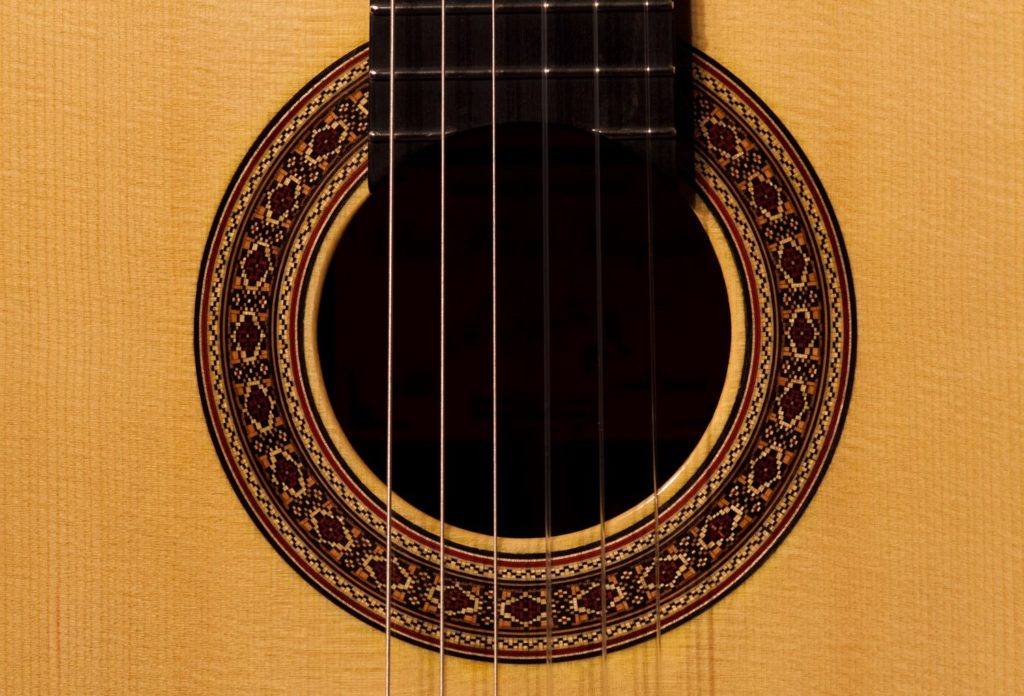 Sometimes a client will approach me with a unique commission, it’s on occasions such as these that a different kind of dialogue begins. Words expressed by the client guide me on a specific path. Soon reference images get shared, this leads to technical drawings being drafted, and then, like a magical phrase spoken through what was once ambiguity: words metamorphose into a “dream guitar”. The imaginative faculties of the commissioner and the technical mastery of the luthier merge, the result is a guitar with a truly unique DNA, both stylistically as well as sonically.
Sometimes a client will approach me with a unique commission, it’s on occasions such as these that a different kind of dialogue begins. Words expressed by the client guide me on a specific path. Soon reference images get shared, this leads to technical drawings being drafted, and then, like a magical phrase spoken through what was once ambiguity: words metamorphose into a “dream guitar”. The imaginative faculties of the commissioner and the technical mastery of the luthier merge, the result is a guitar with a truly unique DNA, both stylistically as well as sonically.
In this specific example here of “Santos”, the client was an old friend whom I had built for before. An accomplished classical guitarist, he sought a steel string to serve as a fusion between classical and a singer/songwriter sound. “I want a steel string that pays homage to the flamenco instruments of the past,” he said. The premise of his idea was to build a steel string disguised aesthetically as a traditional flamenco, and have an ease in playability to accommodate his classical technique.
“Santos” A steel string who thought he was a flamenca.


I suggested an orchestral model for his finger plucking style, which we modeled after the design of Mario Beauregard's “OM” models.

For the headstock, we chose a traditional flamenco block style construction to mimic the flamenco guitar look. For this we chose to follow the stylistic origins of builder Warren White, being drawn to his design with a classic “Media Luna” design done in a minimalistic way.


And as a shimmering red coursed through Santos's Brazilian Rosewood grains, “he’s alive!”, they all exclaimed.

What makes LFDM guitars unique is that all requests made by the client are first executed as technical drawings.


Because “Santos” is such a special guitar, we needed to create a test model to set up its framework. Here’s a prototype we made using a Mexican wood called Pau Ferro, also known as Granadillo. Amongst some of the unique features implemented in this guitar is a bass sound port with a "reflex" tube.

The purpose of a bass sound port is to bring out some of the lower frequencies of the guitar. And as a natural solution to EQ, when less bass is needed, the player can simply close the port with its cover secured in place by magnets.

The pipe will be trimmed at the final stages of assembly when attaching the top and closing the guitar. The appropriate length will be determined as to not make “Santos” sound like a boom box.
Below you will see the development of the top and its falcate bracing.

Santos has quite the personality, through the building process I discover new shades to his character.
Sometimes a client with some hidden photoshop skills will surprise me with visual art. Here's a psychedelic twist on Santos that manages to illuminate the falcate bracing, quite literally!

In these images below you'll see compliance tests being conducted on the top of the 'Santos' prototype. Based on the pull of a string at 10Nm: there's an ideal resistance that’s neither too little nor too much, according to criteria laid down by the developer of falcate bracing, Trevor Gore.
NOTE: For those interested in owning a guitar just like "Santos" (the prototype is currently available), please inquire.

Here is an example of a Maccaferri classical guitar, 2004 model, which had been made available at The Twelfth Fret Guitarists' Pro Shop in downtown Toronto.

Here you'll see a classical guitar with two 35mm sound ports in the upper shoulders. This was requested by the client after an interest in a Kenny Hill guitar with a similar modification.

A pin-less steel string bridge made to resemble a flamenco guitar bridge. Sometimes the imagination of the client and engineering of the luthier lead to the creation of something special.

Although I do enjoy working on special projects, and one-off ideas, I love working the most on crafting fine classical guitars.



























